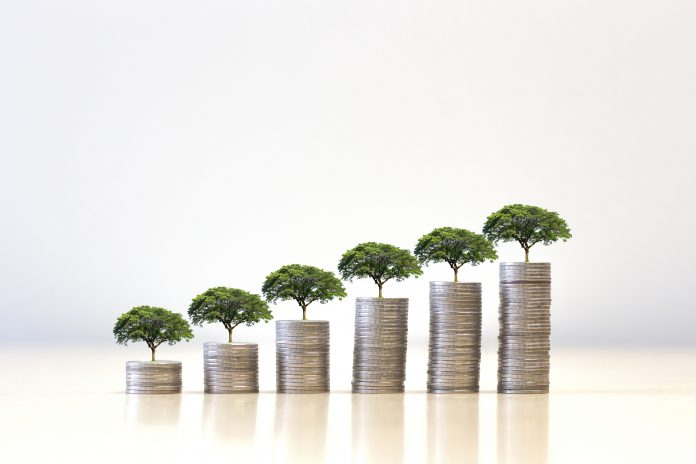Here, we explore the importance of building a sustainable brand and what you have to know to achieve one
Shopping has undergone something of a revolution in the last few decades. From the digital world pulling people away from the high street, to the rise of independent sellers and pop-up stalls, there is now a better sense of connection between both customers and businesses. Customers can contact stores more directly, voice their opinions to a wider audience. It is hardly surprising that experts have noted that customers are more interested in the history of a product rather than the product itself, hence the importance of building a sustainable brand.
What ‘brand’ really means
This is where a company’s brand comes into play. For many, the word ‘brand’ brings to mind logos and slogans, but as Paul Jankowski points out, a company’s brand is so much more than a logo. A company’s brand is the perception of the company, and the emotional links born of that perception. Customers scrutinise every aspect of a company’s message and purpose, and now more than ever, their stance on sustainability.
Becoming sustainable
Waste is no longer, well, waste. Everyone is looking for ways to reduce and recycle, so waste is enjoying a transformation from an unwanted by-product to a potential source of energy and raw materials.
But this is being hampered, according to Helistrat, by outdated modes of waste servicing, such as costing removal at price per bin, per lift. The company poses the following questions as a means for a brand to plan a way to better utilise its waste in order to gain that all-important sustainable image:
What are our objectives?
What goals can your company put in place? This could be anything from; committing to diverting waste away from landfill, reducing waste at the point of procurement, or reducing the waste involved in your supply chain.
Such commitments can not only help your brand become more sustainable, but help your company stand out against its competitors.
How do we segregate the different types of materials?
Depending on your sector, segregating waste may seem like daunting task. But doing so can lower costs for your business, with huge savings on landfill tax. Diverting your waste from landfill wherever possible should be your goal, not only for your profit margins but for your sustainable brand image.
Waste management company Reconomy have outlined a step-by-step guide to segregating construction waste, but the strategy is certainly flexible across all sectors
Keeping track of materials ordered
Knowing what’s coming in, whether it’s to a construction site or a manufacturing line, will help you plan for what’s potentially going out. Look at what waste you are producing and its source — can it be injected back into the circular economy? Or could it even be scrap metal that can be sold? When segregating waste, keep in mind what is hazardous. Hazardous waste materials will require specialist disposal, whether its batteries or chemicals, it requires special treatment.
Using skips and containers
Segregating your waste at the point of production is a far simpler process than segregating a stockpile of waste. As an example for the construction sector, this means making sure there is correctly labelled on-site storage for each waste stream. You could have a section for general waste, a section for packaging and a section for hazardous waste.
If you’re going to hire a skip to help you segregate waste that isn’t hazardous, make sure you consider the size required and the room you have on site.
Trained staff
There is no use planning an efficient waste management strategy to divert landfill, if you’re getting it wrong on the shop floor. Make sure your team knows your strategy and how your waste is being segregated. Everybody needs to be singing from the same hymn sheet.
Seek expert help
A specialist waste management company can certainly help you tackle the more complex elements of your strategy. For example, you may require assistance in how to optimise your segregation with the room you have available on site.
• Have a valid waste carrier registration
• Use licensed recycling and disposal sites
Changing the face of waste
With the correct approach, your company can not only reap the benefits of avoiding landfill, but tell your customers about it too! The market potential for being an honest, sustainable brand cannot be overstated. Triple Pundit outlined how sustainability drives greater efficiency within a business, builds authenticity through a transparent supply chain. This creates a greater understanding of your customer base through understanding what they want and need from your business.
Of course, adapting to become more sustainable is hardly a choice. For the health of the world, it is utterly necessary for businesses to take responsibility when handling their waste, to help contribute towards the circular economy. If we all continue to find new and innovative ways to breathe new life into so-called waste products, then we’ll continue to contribute towards the circular economy.
Sources:
https://www.theguardian.com/sustainable-business/building-sustainable-brand-communication
https://www.forbes.com/sites/pauljankowski/2015/01/22/5-critical-steps-to-build-a-sustainable-brand/#1f59d611bd03
https://www.helistrat.co.uk/2016/07/building-sustainable-brand/
https://www.reconomy.com/blog/how-segregate-your-waste-cut-cost-construction
https://www.triplepundit.com/2018/11/sustainability-brand-playbook/











